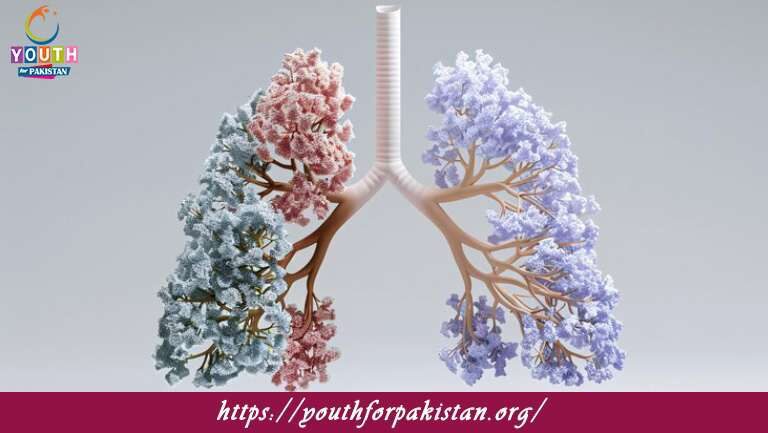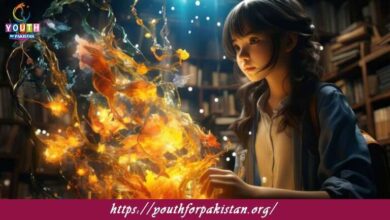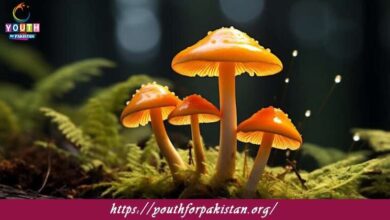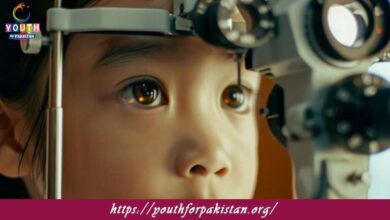11th Class Biology Chapter 13 MCQs with Answers

Revise your understanding of Gaseous Exchange MCQs with questions about respiratory systems, gas exchange mechanisms, and adaptations in animals. These Chapter 13 quizzes are perfect for 11th Class Biology students preparing for exams.
In humans, the primary organ responsible for gaseous exchange is:
a) Liver
b) Kidneys
c) Lungs
d) Heart
Which of the following gases is exchanged during respiration?
a) Oxygen and nitrogen
b) Oxygen and carbon dioxide
c) Carbon dioxide and nitrogen
d) Carbon dioxide and hydrogen
The process by which oxygen is taken in and carbon dioxide is expelled from the body is known as:
a) Osmosis
b) Gaseous exchange
c) Photosynthesis
d) Digestion
In which part of the respiratory system does gaseous exchange occur?
a) Trachea
b) Bronchi
c) Alveoli
d) Diaphragm
During gaseous exchange, oxygen moves from the alveoli into the:
a) Capillaries
b) Bronchioles
c) Trachea
d) Larynx
Carbon dioxide is transported in the blood mainly in the form of:
a) Carbonic acid
b) Carbon monoxide
c) Carbonate ions
d) Carbon tetrachloride
The movement of gases between the alveoli and the blood occurs through the process of:
a) Osmosis
b) Active transport
c) Diffusion
d) Filtration
Hemoglobin is a protein present in red blood cells that binds to:
a) Oxygen
b) Carbon dioxide
c) Nitrogen
d) Hydrogen
During external respiration, oxygen diffuses from the alveoli into the:
a) Bronchioles
b) Capillaries
c) Trachea
d) Larynx
Internal respiration involves the exchange of gases between the:
a) Alveoli and the blood
b) Blood and body tissues
c) Alveoli and the bronchioles
d) Blood and the bronchi
The respiratory pigment that carries oxygen in the blood is called:
a) Hemoglobin
b) Chlorophyll
c) Myoglobin
d) Hemocyanin
Which of the following statements about gaseous exchange in plants is true?
a) Gaseous exchange in plants occurs through the lungs.
b) Gaseous exchange in plants occurs through the stomata and lenticels.
c) Gaseous exchange in plants occurs through the alveoli.
d) Gaseous exchange does not occur in plants.
The process of gas exchange in plants is called:
a) Respiration
b) Transpiration
c) Photosynthesis
d) Diffusion
The openings in plant leaves that facilitate gaseous exchange are called:
a) Alveoli
b) Stomata
c) Bronchioles
d) Lenticels
In plants, oxygen is required for:
a) Photosynthesis
b) Respiration
c) Transpiration
d) Digestion
Which of the following gases is produced as a byproduct of respiration and released during exhalation?
a) Oxygen
b) Nitrogen
c) Carbon dioxide
d) Hydrogen
The movement of gases in and out of the respiratory system occurs due to differences in:
a) Temperature
b) Pressure
c) Density
d) Volume
The process of gas exchange in the lungs is influenced by the partial pressure of gases. Which gas has a higher partial pressure in the alveoli compared to the blood?
a) Oxygen
b) Carbon dioxide
c) Nitrogen
d) Hydrogen
The diaphragm is a muscle involved in the process of:
a) Digestion
b) Circulation
c) Excretion
d) Respiration
During inhalation, the diaphragm:
a) Contracts and moves upward
b) Relaxes and moves upward
c) Contracts and moves downward
d) Relaxes and moves downward
During exhalation, the diaphragm:
a) Contracts and moves upward
b) Relaxes and moves upward
c) Contracts and moves downward
d) Relaxes and moves downward
Which of the following is an involuntary process that regulates the rate and depth of breathing?
a) Coughing
b) Sneezing
c) Sighing
d) Breathing reflex
The process of breathing in air is known as:
a) Inhalation
b) Exhalation
c) Respiration
d) Transpiration
The process of breathing out air is known as:
a) Inhalation
b) Exhalation
c) Respiration
d) Transpiration
During exercise, the rate of respiration increases to meet the demand for:
a) Oxygen
b) Carbon dioxide
c) Nitrogen
d) Hydrogen
In which of the following organs does gaseous exchange occur in insects?
a) Lungs
b) Gills
c) Tracheae
d) Stomata
The system of tubes that transport air directly to the tissues in insects is called:
a) Lungs
b) Gills
c) Tracheae
d) Stomata
In insects, the openings on the body surface through which air enters and leaves are called:
a) Alveoli
b) Stomata
c) Spiracles
d) Lenticels
The process of gas exchange in insects occurs through the system of:
a) Lungs
b) Gills
c) Tracheae
d) Stomata
Which of the following insects has specialized gill structures for gaseous exchange?
a) Butterfly
b) Dragonfly
c) Mosquito
d) Ant
The respiratory pigment that carries oxygen in some insects is called:
a) Hemoglobin
b) Chlorophyll
c) Myoglobin
d) Hemocyanin
Which of the following is a respiratory adaptation in aquatic animals that allows them to obtain oxygen from water?
a) Tracheae
b) Gills
c) Spiracles
d) Lenticels
Gills are highly vascularized structures that allow for efficient:
a) Excretion
b) Absorption
c) Filtration
d) Gaseous exchange
Fish use gills to extract dissolved oxygen from water and release:
a) Nitrogen
b) Carbon dioxide
c) Hydrogen
d) Oxygen
The process by which aquatic animals release carbon dioxide into the water is called:
a) Transpiration
b) Exhalation
c) Osmosis
d) Diffusion
The specialized structures in fish gills that increase the surface area for gaseous exchange are called:
a) Bronchi
b) Alveoli
c) Gill filaments
d) Capillaries
The respiratory pigment present in fish that binds to oxygen is called:
a) Hemoglobin
b) Chlorophyll
c) Myoglobin
d) Hemocyanin
The mechanism of breathing in fish involves the movement of:
a) Diaphragm
b) Lungs
c) Gill covers
d) Tracheae
The process by which oxygen from the air is transported to body tissues in the bloodstream is known as:
a) External respiration
b) Internal respiration
c) Cellular respiration
d) Pulmonary respiration
The process by which carbon dioxide produced by body tissues is transported back to the lungs for elimination is known as:
a) External respiration
b) Internal respiration
c) Cellular respiration
d) Pulmonary respiration
The process of gas exchange in the lungs is enhanced by the large surface area of:
a) Alveoli
b) Bronchioles
c) Trachea
d) Diaphragm
In which of the following structures does gaseous exchange occur in birds?
a) Lungs
b) Gills
c) Tracheae
d) Air sacs
The unique respiratory system of birds allows for:
a) Bidirectional airflow
b) Unidirectional airflow
c) Circular airflow
d) Random airflow
The air sacs in birds function to:
a) Store air for vocalization
b) Aid in buoyancy during flight
c) Facilitate gas exchange during both inhalation and exhalation
d) Enhance the sense of smell
In the human respiratory system, which structure acts as a protective flap to prevent food from entering the trachea during swallowing?
a) Larynx
b) Pharynx
c) Epiglottis
d) Trachea
Which of the following factors affects the rate of gaseous exchange in the respiratory system?
a) Blood glucose level
b) Blood pressure
c) Surface area for exchange
d) Body temperature
Which of the following statements about oxygen transport in the blood is true?
a) Oxygen is transported in the plasma dissolved in water.
b) Oxygen is primarily transported bound to hemoglobin in red blood cells.
c) Oxygen is transported as a gas in the blood vessels.
d) Oxygen is carried by white blood cells in the blood.
The concentration of carbon dioxide in the blood is mainly regulated by:
a) The kidneys
b) The liver
c) The lungs
d) The heart
Which of the following gases is produced during cellular respiration and diffuses out of cells into the blood?
a) Oxygen
b) Carbon dioxide
c) Nitrogen
d) Hydrogen
In which of the following structures does gaseous exchange occur in reptiles?
a) Lungs
b) Gills
c) Tracheae
d) Skin
The process of gas exchange in reptiles is similar to that in:
a) Mammals
b) Fish
c) Birds
d) Insects
In reptiles, the lungs are enclosed in a protective structure known as the:
a) Diaphragm
b) Rib cage
c) Pleural cavity
d) Thoracic cavity
Which of the following statements about gaseous exchange in plants is true?
a) Gaseous exchange in plants occurs through the lungs.
b) Gaseous exchange in plants occurs through the stomata and lenticels.
c) Gaseous exchange in plants occurs through the alveoli.
d) Gaseous exchange does not occur in plants.
The openings in plant leaves that facilitate gaseous exchange are called:
a) Alveoli
b) Stomata
c) Bronchioles
d) Lenticels
In plants, oxygen is required for:
a) Photosynthesis
b) Respiration
c) Transpiration
d) Digestion
Which of the following gases is produced as a byproduct of respiration and released during exhalation?
a) Oxygen
b) Nitrogen
c) Carbon dioxide
d) Hydrogen
The movement of gases in and out of the respiratory system occurs due to differences in:
a) Temperature
b) Pressure
c) Density
d) Volume
The process of gas exchange in the lungs is influenced by the partial pressure of gases. Which gas has a higher partial pressure in the alveoli compared to the blood?
a) Oxygen
b) Carbon dioxide
c) Nitrogen
d) Hydrogen
The diaphragm is a muscle involved in the process of:
a) Digestion
b) Circulation
c) Excretion
d) Respiration
During inhalation, the diaphragm:
a) Contracts and moves upward
b) Relaxes and moves upward
c) Contracts and moves downward
d) Relaxes and moves downward
If you are interested to enhance your knowledge regarding Physics, Chemistry, Biology, and Computer please click on the link of each category, you will be redirected to dedicated website for each category.





